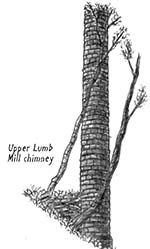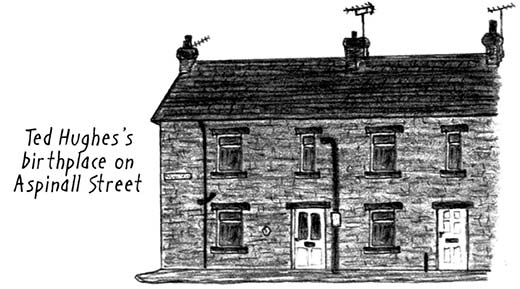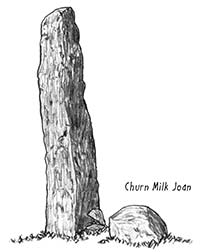Discovering Ted Hughes's Yorkshire Literary & Heritage trail maps
Friday, 5 March 2021
Dr Steve Ely, Director of the Ted Hughes Network at the University of Huddersfield, is delighted to announce that copies of the six Discovering Ted Hughes's Yorkshire literary and heritage trail maps, designed to allow walkers to access Hughes's life and work through his Yorkshire landscapes, are now available to the public through local retail outlets, bookshops, local authority sources and libraries. Electronic versions of the maps can also be accessed — via this link.
 Steve commented, 'The maps, based on the latest research into Hughes's life and writings, and designed by Hebden Bridge cartographer Christopher Goddard, give walkers a unique opportunity to experience the landscapes that inspired and formed England's greatest 20th century poet.'
Steve commented, 'The maps, based on the latest research into Hughes's life and writings, and designed by Hebden Bridge cartographer Christopher Goddard, give walkers a unique opportunity to experience the landscapes that inspired and formed England's greatest 20th century poet.'
Three of the trail maps - Mytholmroyd, where Hughes was born and where he lived until he was 8 years old; Crimsworth Dean, the 'happy valley' where Hughes would camp out with his brother Gerald'; & Heptonstall/ Colden Clough, where Hughes and several members of his extended family once lived - are located within the Hebden Royd area.
Steve Ely continues, 'So many locations in the Upper Calder Valley are closely associated with Hughes, his life and work. Seven poems, including the anti-war poem 'Out' and 'Source' the touching personal poem about his mother, are set in his birthplace at 1 Aspinall Street, with a further twenty-seven poems having locations in the Mytholmroyd area.

Several other poems and stories (including 'Horses' and 'The Deadfall' are set in Crimsworth Dean. Hughes also wrote several poems focused on Heptonstall & Colden Clough, including 'Lumb Chimneys' and 'Wind'. The area takes on particular resonance when you take into account that Hughes once lived at Lumb Bank just below Heptonstall, and for a long time considered settling there permanently, and that he buried his first wife, the poet Sylvia Plath, in Heptonstall cemetery.
'The landscape of the Upper Calder Valley was hugely important to Hughes's life, work, and imagination, and he wrote over a hundred poems about the area, most of which are collected in his 1994 collection, Elmet.'
Interpretative panels that mark the start of each walk are installed canalside near the entrance to the Moderna business Park in Mytholmroyd, at Hardcastle Crags car park and at Hebden Bridge railway station (from 4th March), but the range of the maps extends beyond the Upper Calder Valley.
Steve added, 'Discovering Ted Hughes's Yorkshire also includes three maps that open up Hughes's other Yorkshire locations; two are are focused in and around Mexborough in the southern West Riding, where he lived between the ages of 8-21 - the place where he wrote his first poems and resolved to become a poet - and another focuses on Patrington in the East Riding, where Hughes did his National Service in the RAF. These three Yorkshire locations formed Hughes as a poet.'
 Steve continued, 'We had originally planned to launch the maps in the spring and summer of 2020 with guided walks, school and community creative writing workshops and poetry readings, but Covid-19 put those activities on hold. As soon as restrictions are lifted - hopefully by the late spring/ summer this year - we will implement and publicise a programme of Discovering Ted Hughes's Yorkshire activities. However, people will at least now have the opportunity to use the maps to self-guide themselves along the trails.'
Steve continued, 'We had originally planned to launch the maps in the spring and summer of 2020 with guided walks, school and community creative writing workshops and poetry readings, but Covid-19 put those activities on hold. As soon as restrictions are lifted - hopefully by the late spring/ summer this year - we will implement and publicise a programme of Discovering Ted Hughes's Yorkshire activities. However, people will at least now have the opportunity to use the maps to self-guide themselves along the trails.'
Although the Ted Hughes Network at the University of Hudderfield co-ordinated the development of Discovering Ted Hughes's Yorkshire, a number of Calderdale organisations, including Hebden Royd Town Council, Calderdale Council and the Elmet Trust also made important contributions.
Thanks to
Steve says, 'I'd like to thank Hebden Royd Town council in particular for their support and generous funding of the project, the Elmet Trust's Ruth Crossley and Nick Wilding for the depths of Hughes-related local knowledge they were able to share, and Chris Goddard for his expertise - and patience! Carol Hughes's generous support and encouragement was also much appreciated.'

